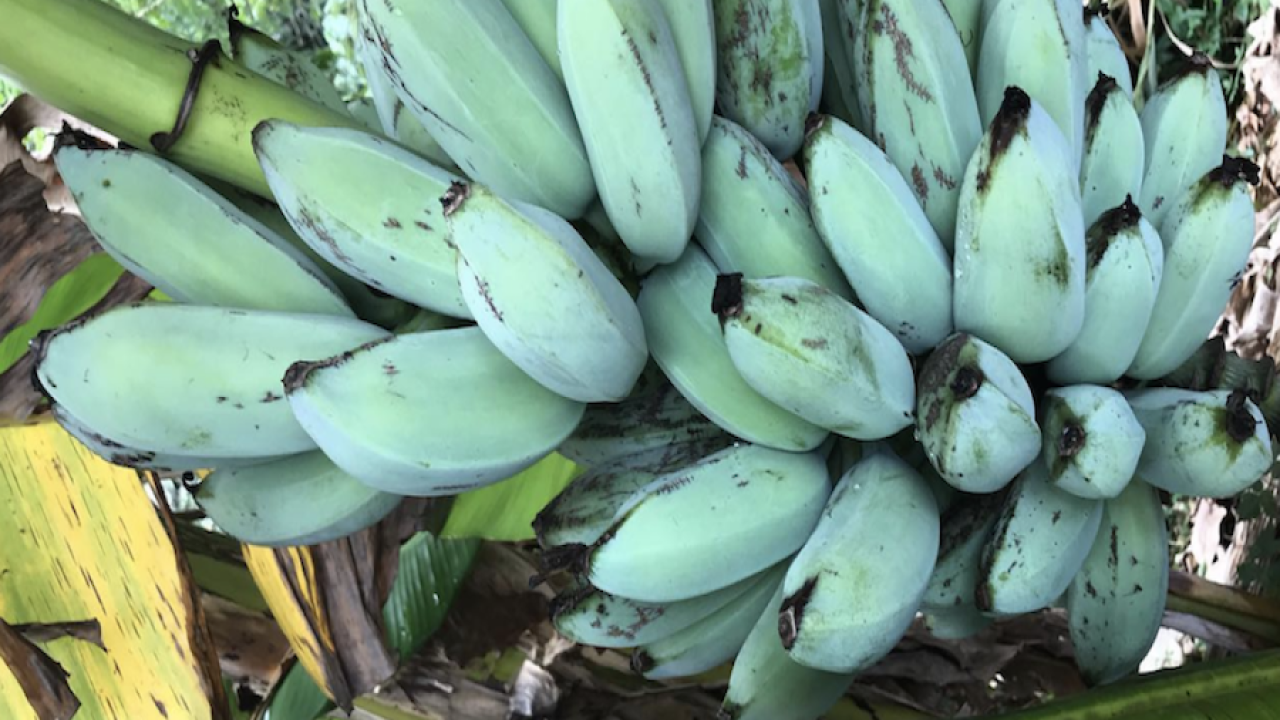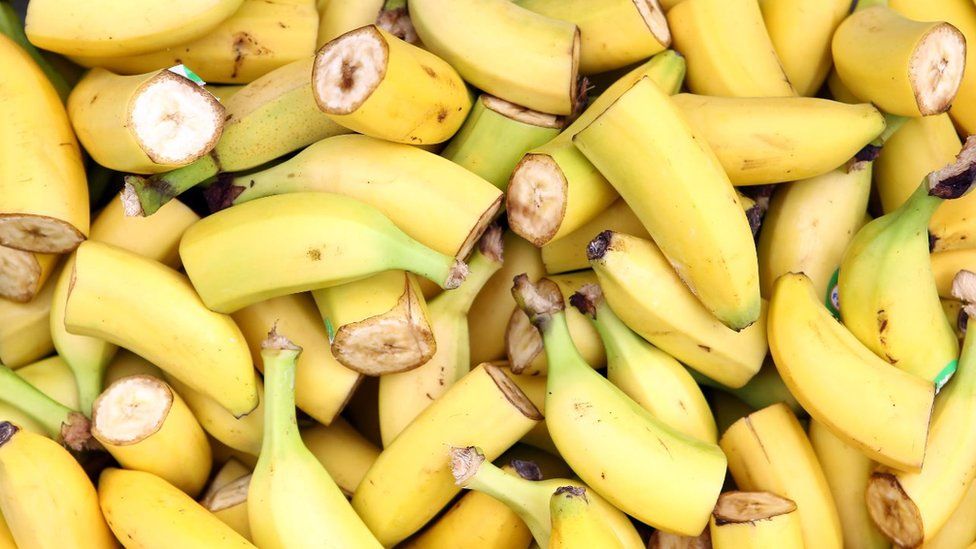The current popular variety of bananas, known as the Cavendish, faces a serious threat of extinction due to a fungal disease called Panama disease Tropical Race 4 (TR4). This devastating disease attacks the roots of banana plants, making them unable to absorb nutrients and water, ultimately killing the plant. The Cavendish variety is particularly vulnerable to TR4 because it lacks genetic diversity, making it highly susceptible to the disease. The spread of TR4 has already led to significant losses in banana plantations across Asia, Australia, and parts of Africa. As TR4 continues to spread, there is a real concern that the Cavendish variety, which accounts for a significant portion of global banana production, may face widespread devastation, potentially leading to its extinction. This highlights the importance of finding alternative banana varieties or developing resistant strains to ensure the survival and future availability of this beloved fruit.

Blue Java Banana
When we think of bananas, the image of a vibrant yellow fruit comes to mind. However, nature’s surprises never cease to amaze us, and there exists a unique variety of blue bananas that adds a colorful twist to this classic fruit. In this article, we will delve into the intriguing world of blue bananas, discussing their origins, characteristics, and culinary potential. The world of blue bananas unveils an enchanting array of flavors, colors, and culinary possibilities. From the creamy sweetness of the Blue Java to the refreshing zest of the Pisang Ceylon, these unique fruits captivate our senses and add a vibrant twist to traditional banana recipes. While not as widely available as their yellow counterparts, blue bananas offer a delightful and nutritious addition to any fruit lover’s palate. So, embrace the unexpected and seek out the extraordinary blue bananas for a truly unforgettable taste experience.
One of the most well-known blue banana varieties is the Blue Java, also called the “Ice Cream” banana. This distinctive fruit boasts a pale blue or silver skin when unripe, which gradually turns to a creamy yellow when fully ripe. Its flesh has a delicate, sweet flavor reminiscent of vanilla ice cream, earning it the fitting nickname.
Originating from Sri Lanka, the Pisang Ceylon banana is another intriguing blue variety. Its striking blue-green skin hides a creamy white flesh that is slightly sweet with hints of citrus. This unique banana is valued not only for its appealing color but also for its nutritional benefits, being rich in fiber, potassium, and vitamin C.
While the Blue Java is the most recognized blue banana, there are other related varieties with similar coloration. These include the Namwah Blue, Kluai Khai, and Kluai Namwa Aw. Each variant exhibits its own distinct flavor profile, ranging from sweet and creamy to subtly tangy.

These Have A Sweet and Creamy Texture
Blue bananas are versatile fruits that can be enjoyed in various culinary preparations. Their sweet, creamy flesh lends itself well to smoothies, milkshakes, and desserts. Additionally, their unique color adds a visually striking element to fruit salads or tropical-themed dishes. Blue bananas can also be used in baking, adding a delightful twist to banana bread or muffins.
Like their yellow counterparts, blue bananas are packed with essential nutrients. They are a good source of potassium, which supports heart health and helps maintain proper blood pressure. Blue bananas also contain fiber, vitamin C, and other beneficial antioxidants that contribute to overall well-being and immune system support.
Blue bananas are primarily grown in tropical regions, including Southeast Asia, Hawaii, and parts of Central and South America. While they may be more challenging to find in local supermarkets, specialty fruit markets or online sources may offer these unique varieties. For enthusiasts with a green thumb, cultivating blue bananas at home in suitable climates can be an exciting project, providing a source of fresh and exotic fruits.

The Cavendish Banana Is At Risk







